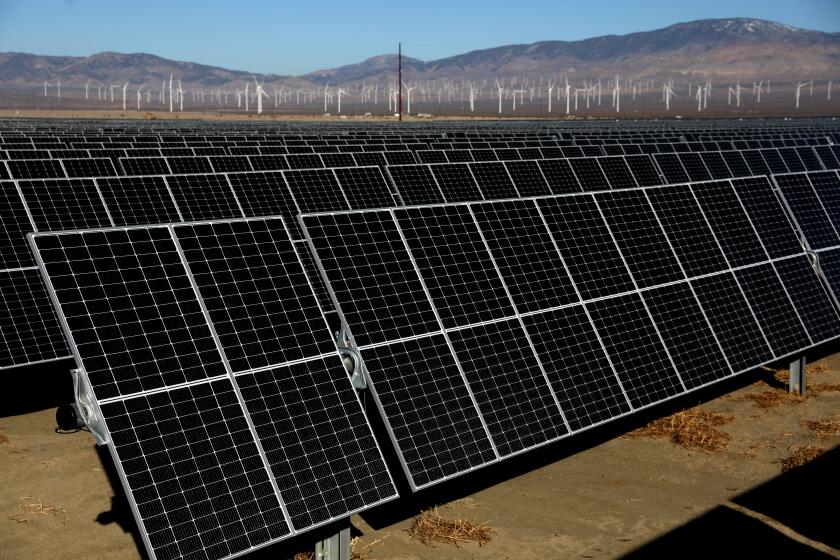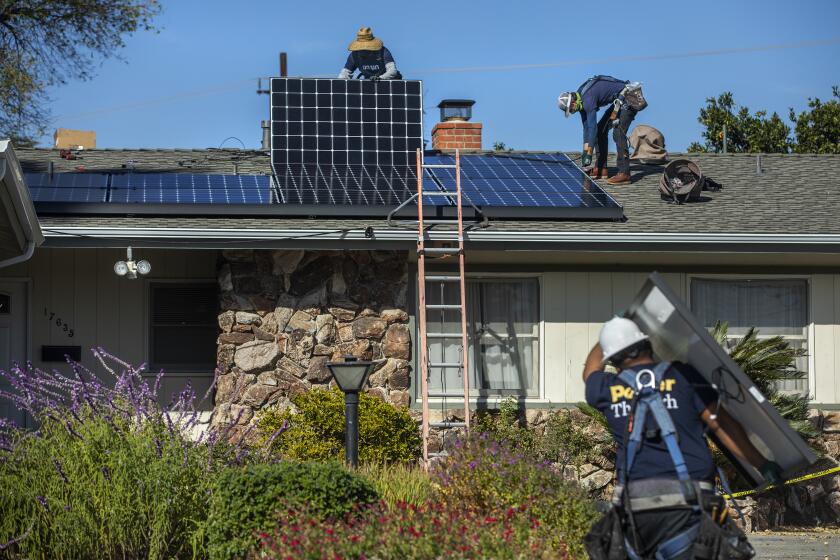Los Angeles now has a road map for 100% renewable energy
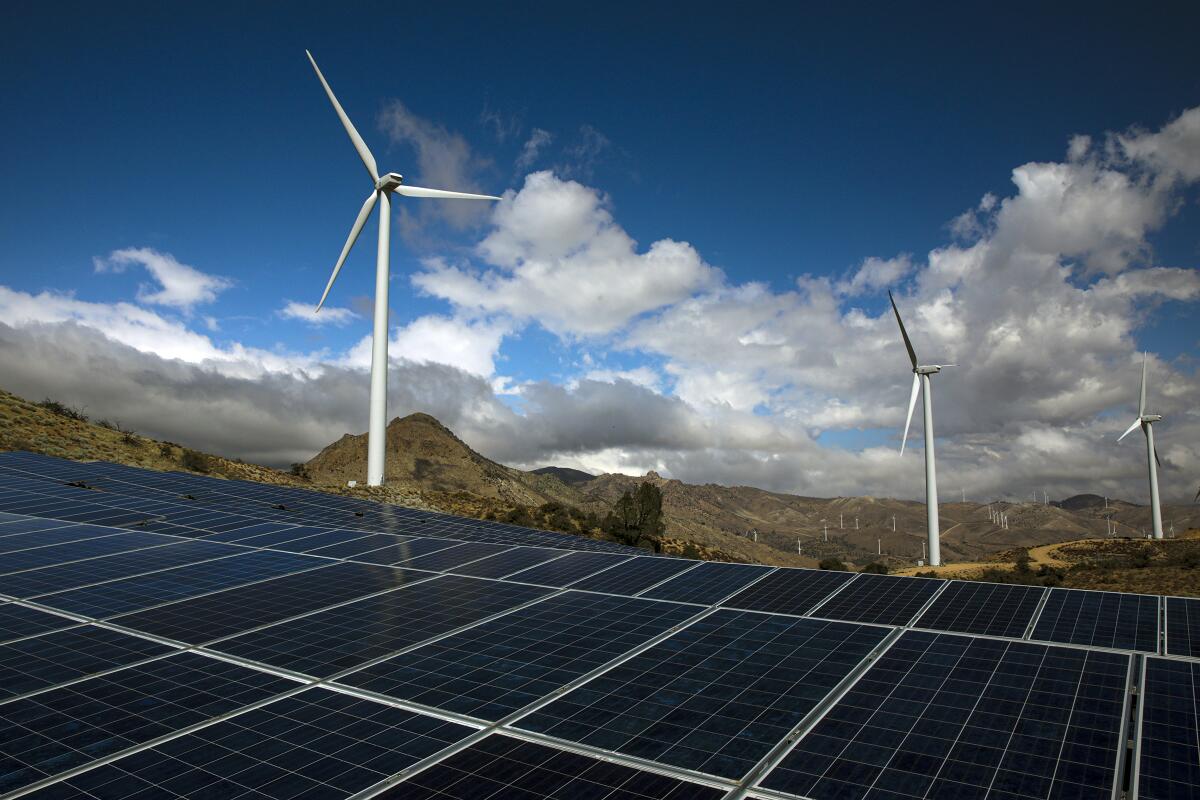
Los Angeles is one of the last places in California still burning coal for electricity — and if all goes according to plan, it could become one of the country’s first major cities to nearly eliminate fossil fuels from its power supply.
In a first-of-its-kind study commissioned by the city and released Wednesday, the National Renewable Energy Laboratory concluded L.A. is capable of achieving 98% clean energy within the next decade and 100% by 2035, meeting one of President Biden’s most ambitious climate goals. And it can do so without causing blackouts or disrupting the economy, the federal research lab found, undercutting two of the most common arguments used by opponents of climate action.
The path forward for the next decade is clear, NREL found: Build solar farms, wind turbines and batteries as fast as possible. Get solar panels on rooftops, electric cars in garages and electric heat pumps in homes. And invest in energy efficiency and “demand response” programs that pay people to use electricity during times of day when solar and wind power are plentiful.
The benefits would be immense: not only helping to counteract the climate crisis, but also slashing deadly air pollution from cars, trucks, power plants and gas furnaces, much of it concentrated in low-income neighborhoods and communities of color.
Crucially, all the paths to 100% clean energy studied by NREL would be capable of keeping the lights on every hour of the year, the researchers say — even on the hottest summer and coldest winter days, even when the sun doesn’t shine and the wind doesn’t blow for days at a time, and even when a wildfire takes down a major transmission line.
Policymakers are looking to California to show it’s possible to phase out fossil fuels. But, as rolling blackouts last summer showed, challenges lie ahead.
That’s a key point after recent weather extremes that highlighted the importance of a reliable power grid, including brief rolling blackouts in California during a heat wave last summer and multi-day outages in Texas during last month’s cold snap.
Or as Mayor Eric Garcetti put it: “We can keep our medical equipment on, we can keep our refrigerators working, we can keep the city going even in the face of more extreme weather.”
“The top scientists in the world have taken this from dreamland to reality,” Garcetti said in an interview. “There are hundreds of pathways that could take us to 100% renewable. It no longer should be a question of if, but when and how.”
The NREL study team included nearly 100 people and was aided by the “Eagle” supercomputer at the research lab’s Golden, Colo., headquarters. They conducted an energy systems analysis they believe to be unprecedented in scope and detail, running more than 100 million simulations since 2017 and integrating heaps of modeling data on electricity use, job creation, weather conditions, power lines and the potential for rooftop solar panels on houses across Los Angeles, among other topics.
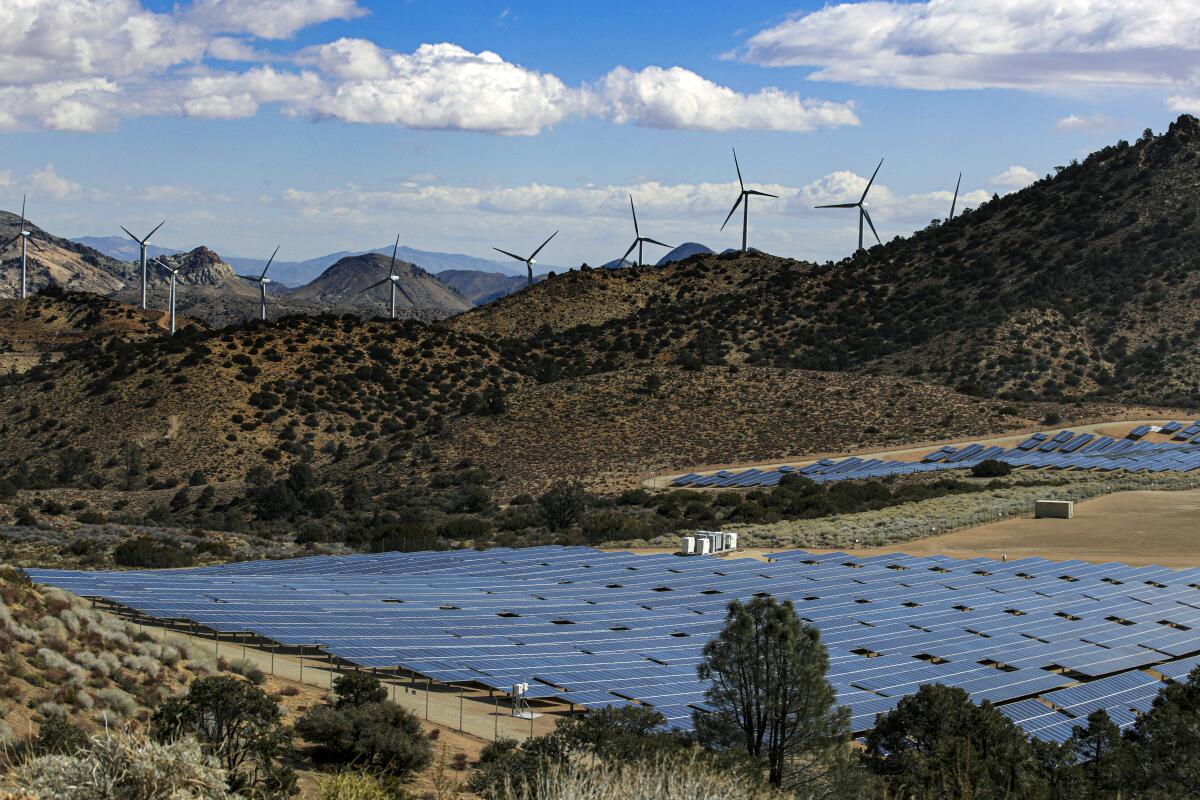
The possibility of reaching 100% clean energy by 2035 is one of several options the researchers studied in detail.
Under a different scenario, L.A. would still get about 10% of its electricity from gas come 2045, down from 24% today. City officials say that would be in compliance with a state law requiring 100% clean energy by that year, under a contested interpretation of the law’s wording. It’s a point of frustration for clean energy advocates, who say the legislation’s intent was clear.
Record heat. Raging fires. What are the solutions?
Get Boiling Point, our newsletter about climate change, the environment and building a more sustainable California.
You may occasionally receive promotional content from the Los Angeles Times.
That relatively less ambitious option would cost Los Angeles $57 billion to $69 billion, depending in part on how many people switch to electric cars and electric heat pumps, and how good a job the city does cajoling people into using energy during sunnier, windier times of day.
Getting to 100% a decade earlier — and doing so without gas or biofuels — would cost about $86 billion.
The study doesn’t offer a detailed look at how energy bills might change for Angelenos over the next quarter-century. It also doesn’t estimate how many jobs might be lost in specific businesses such as oil refining and gas distribution, although it does project several thousand new jobs a year building and operating clean energy facilities under every scenario.
But however fast or aggressively officials choose to act, getting to 100% climate-friendly power “will not affect the City of L.A. economy, on net, in any meaningful manner,” especially with the costs spread out over 25 years, NREL concluded.
“While there may be slight positive or negative impacts, these changes are small in relationship to the 3.9 million jobs and $200 billion in annual output in [the] L.A. economy as a whole and have an almost negligible impact,” the study says.
Asked whether he supports a 2035 target date, Garcetti hinted to expect an answer at his State of the City address in April.
“To me, accelerating the target date to 2035 increases the benefits,” he said. “Even if it costs more upfront, we know the long-term costs of living cheaply in the short term are too much to bear.”
Still, just because 100% clean energy is possible doesn’t mean it will be easy.
Los Angeles will need to add 470 to 730 megawatts of solar, wind and batteries every year for the next 25 years on average, NREL found — three times as much as in recent years, on the high end. Building all those facilities will require navigating land-use disputes that are only growing more contentious as renewable energy developers increasingly lock up open space in rural areas. And getting all that electricity to L.A. will require building new transmission lines, which can take as long as a decade.
Jason Rondou, director of clean grid strategy at the Los Angeles Department of Water and Power, cited recent power purchase contracts with a solar farm north of L.A. and a New Mexico wind farm as the types of deals the city will need more of, and fast.
“We don’t necessarily have a year to wait to take action on this,” Rondou said.
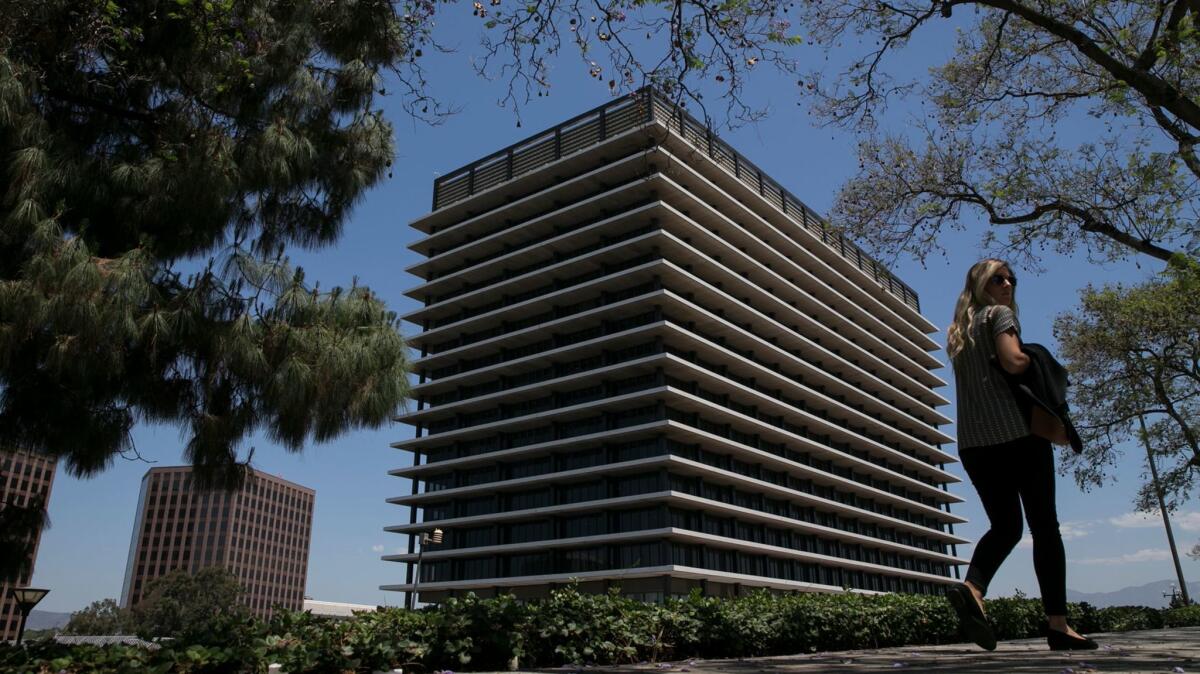
The city will also need relatively expensive clean energy technologies to make sure the lights stay on at all times.
Every pathway outlined by NREL includes geothermal power plants, which tap the Earth’s subterranean heat and can generate climate-friendly energy around the clock, as well as pumped hydropower, which can store solar and wind longer than a typical battery. Several pathways in the study also assume the city keeps its 5.7% ownership stake in Arizona’s Palo Verde nuclear plant.
For Luis Amezcua, a Sierra Club organizer who served on an advisory committee that helped NREL design the study, one of the most important findings is that Los Angeles can stop burning natural gas for electricity, possibly as soon as 2035.
The fuel has become a focal point in climate battles around the country, with some utility companies proposing new gas plants even as they pledge to eventually zero out their planet-warming emissions. Gas burns more cleanly than coal but is still a major contributor to climate change, especially after accounting for leaks from pipelines and other infrastructure.
“This is the country’s largest public utility really looking at how it’s going to make 100% renewable work affordably and reliably,” Amezcua said. “It’s going to make a really good impact on some of the conversations happening in D.C.”
Support our journalism
Your support helps us deliver the news that matters most. Subscribe to the Los Angeles Times.
Under NREL’s 2035 pathway — and several others in which fossil fuels are eliminated by 2045 — Los Angeles would shut down all of its local gas plants, including Scattergood near El Segundo, Haynes in Long Beach and Harbor in L.A.’s Wilmington neighborhood, near the ports. As recently as early 2019, DWP was still planning to spend billions of dollars installing new gas-fired generators at those coastal plants, a proposal that was jettisoned by Garcetti under pressure from climate activists.
The city would also shut down Valley Generating Station, which is in the low-income, largely Latino community of Sun Valley and recently was found to have been leaking methane gas for at least three years. DWP officials faced intense criticism from environmental justice activists after revealing they knew about the leak for a full year before notifying the public.
NREL determined Los Angeles could replace all those gas plants in part by using renewable energy to produce large amounts of hydrogen, then burning the fuel for electricity. It’s a costly and largely untested concept that DWP hopes to pioneer in Utah, where the city is working to replace the coal-fired Intermountain Power Plant — which currently provides one-fifth of the city’s power — with a new gas plant that officials say will be converted to renewable hydrogen fuel over time.
Even though hydrogen is expensive, “it’s what you need for reliability,” said Paul Denholm, the NREL study’s engineering lead. “You have so few other choices for that three-day outage, that Texas-like event where it’s super hot, transmission lines go down.”
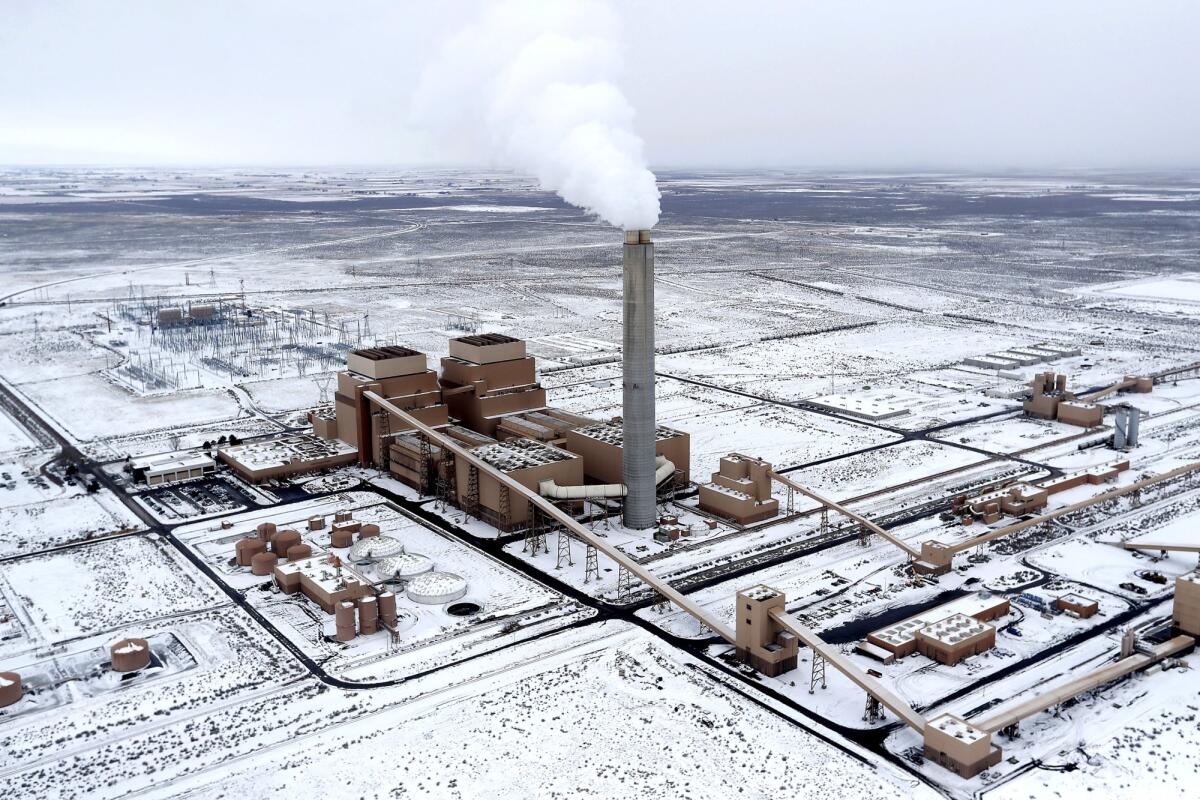
Affordable alternatives to hydrogen could emerge as costs fall for other technologies, such as offshore wind turbines.
But figuring out how to scrub the last bit of climate pollution from the power grid is mostly a problem for the 2030s. And whether city officials ultimately decide to target 100% clean power by 2035 or a decade later, it shouldn’t change much of what they have to do over the next few years, said Jaquelin Cochran, the NREL study’s lead author.
“It’s just changing how quickly do you want to do that last mile,” she said.
Climate and environmental justice activists intend to keep up the pressure on Garcetti and DWP.
Rooftop solar is likely to be one of the pressure points. Utilities often dismiss the technology as an expensive alternative to large solar farms, but a report last year from the consulting firm Vibrant Clean Energy found that zeroing out greenhouse gas emissions from the nation’s electric grid would be $473 billion cheaper with dramatic growth in rooftop and local solar installations.
Jasmin Vargas, an organizer with Food and Water Watch who served on the NREL study advisory committee, thinks lowering the costs of installing solar panels, especially for low-income homes, should be a higher priority for DWP. She pointed to NREL’s assumption that at most 40% of the Angelenos for whom going solar is a smart financial choice by 2045 will actually do so.
“That to me seems extremely low, considering the kind of potential for local solar that the city of L.A. has,” Vargas said.
Electricity generation isn’t just getting cleaner — it’s getting smaller and nimbler, with help from batteries, smart thermostats and electric cars.
DWP officials say they’re committed to robust support for rooftop solar and efficiency upgrades in low-income communities.
They’ve also got their work cut out for them designing electricity rate structures and incentive programs that make it worthwhile for Angelenos to replace their gas heaters and stoves, and to start driving electric vehicles. The study assumes that up to 80% of cars on L.A. roads will be electric by 2045, and that much if not all heating and cooking will shift to electric appliances.
Especially on that last front, the political challenges could be immense. More than 40 California cities and counties have banned or discouraged gas hookups in new buildings, but not Los Angeles. A Times survey last month found that just four of 15 City Council members publicly support requiring new buildings to be all-electric, although none of them outright oppose such a policy.
Garcetti said he supports converting all buildings to zero-emission technologies, although he suggested an electric-only building code isn’t the only option. He mentioned geothermal heat pumps and subbing in hydrogen for natural gas as possibilities.
Southern California Gas Co., the nation’s largest gas utility, has fought all-electric building rules and pledged to replace some of the gas in its pipelines with renewable fuels. The company announced Tuesday that it would aim for net-zero emissions by 2045.
Garcetti said SoCalGas President Maryam Brown texted him to share the news.
“I think that’s the beginning of a huge victory, when the private sector begins to themselves see the writing on the wall,” Garcetti said. Still, he noted, “I’m not going to be satisfied with somebody saying I have 10% hydrogen and it’s 90% natural gas.”
More to Read
Your guide to our clean energy future
Get our Boiling Point newsletter for the latest on the power sector, water wars and more — and what they mean for California.
You may occasionally receive promotional content from the Los Angeles Times.
